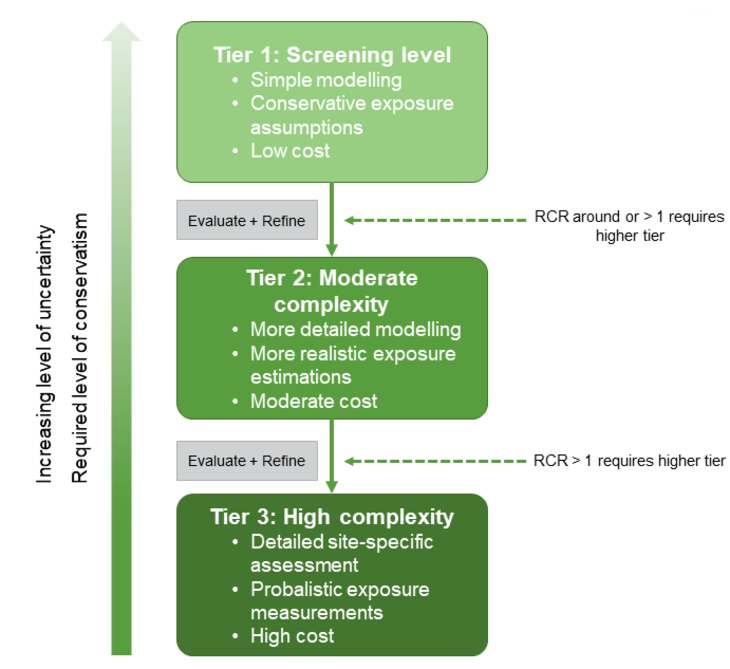For many companies it is often unclear what different models and methods for chemical risk assessment exist, and how they differ from each other. Each model requires different input values and contextual data to estimate the impact on the health of employees. We can imagine that companies can no longer see the wood for the trees. In this blog of a series, we explain the difference between tier 1 models and higher tier methods.
‘’Tiered’’ approach
Risk assessment of hazardous substances is often performed with a so-called ‘’Tiered’’ approach: a method in which exposure is systematically assessed from relatively simple to more complex models and tools [1]. Amongst others accepted under REACH, this method defines tier 1, 2 and 3 tools. Uncertainty about the risks of exposure will be reduced when moving from a tier 1 model to higher tier approaches. The benefits of the tiered approach are shorter and cost-efficient assessment cycles. The ultimate goal is generating a substantiated exposure scenario in which (hazardous) substances can be used in a safe and healthy way.

Application of the Tiered Approach for risks assessment of hazardous substances (adapted from Tischer et al. (2017))
Tier 1 versus higher tier
Tier 1 models and higher tier (2 and 3) approaches are often differentiated by level of uncertainty and level of conservatism. Where tier 1 models are mainly screening tools, the higher tier approaches are more advanced and result in a more realistic and less uncertain exposure estimation. Higher tier approaches result in an accurate Risk Characterization Ratio (RCR) and thereby transcend the conservative estimation of tier 1 models. Below we will pay attention to the characteristics, benefits and drawbacks of the different tiers.
A tier 1 assessment model is simple, easy to use and has a broad range of application areas. They are often defined as screening tools, because the models are perfect for fast differentiation of situations that expose a risk and situations that don’t. As a result, the models are useful to prioritize hazardous substances and risks. Tier 1 models are conservative which means the exposure assessment is slightly overestimated. For this reason, it is recommended that situations with a RCR above 1 as well as around 1 are further assessed with higher tier approaches. Examples of tier 1 models are ECETOC-Tra, EMKG Expo tool and MEASE.
Higher tier assessment methods are more complex and result in a higher accuracy. In comparison to tier 1 models, they reduce a lot of uncertainty about exposure estimations. Since higher tier approaches (including models) are more advanced, they require more detailed and site-specific input. This input and contextual data results in a realistic exposure estimation. The drawbacks on the other hand are that higher tier models require expertise by an occupational hygienist and cost more time and resources. In case an exposure situation results in a RCR above 1, it is recommended to follow up with site-specific measurements. Examples of higher tier models are: the Advanced REACH Tool (ART) and the Stoffenmanager exposure model.
Tiered approach in Chemrade
In Chemrade, the ECETOC-Tra (tier 1), the Stoffenmanager exposure model (higher tier) and the Advanced Reach Tool (higher tier) are incorporated in the platform. The combination of models allows users to apply the tiered approach, all in one platform. When higher tier models identify risks in certain situations, Chemrade consultants and partners can support you in performing site-specific measurements.
Feel free to contact us for more information about our software and services.
More information about the different tools can be found in the ‘’Guidance on Information Requirements and Chemical Safety Assessment’’ of ECHA.
[1] Tischer et al. (2017) Evaluation of Tier One Exposure Assessment Models (ETEAM): Project Overview and Methods. Annals of Work Exposures and Health, 61, 911-920